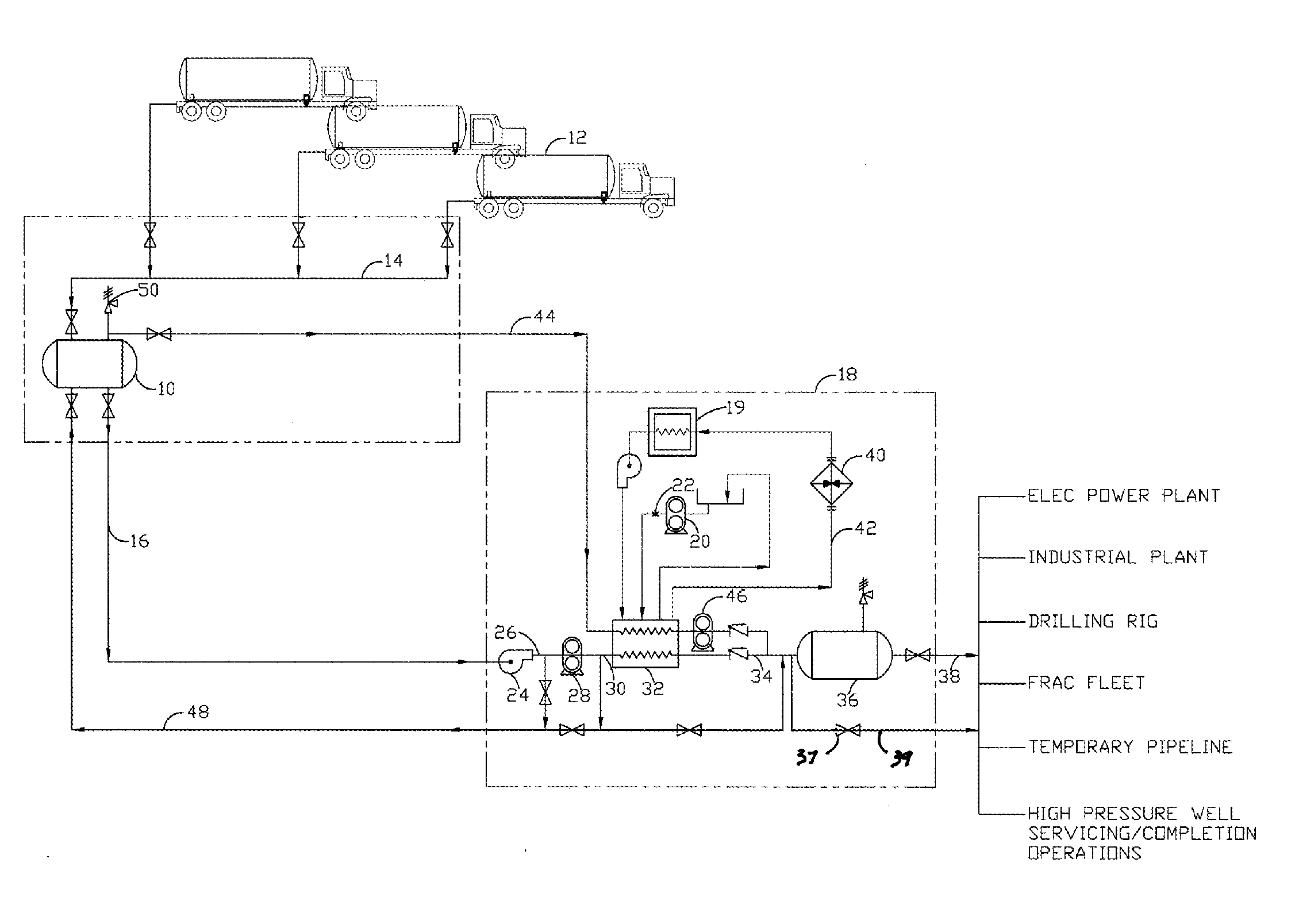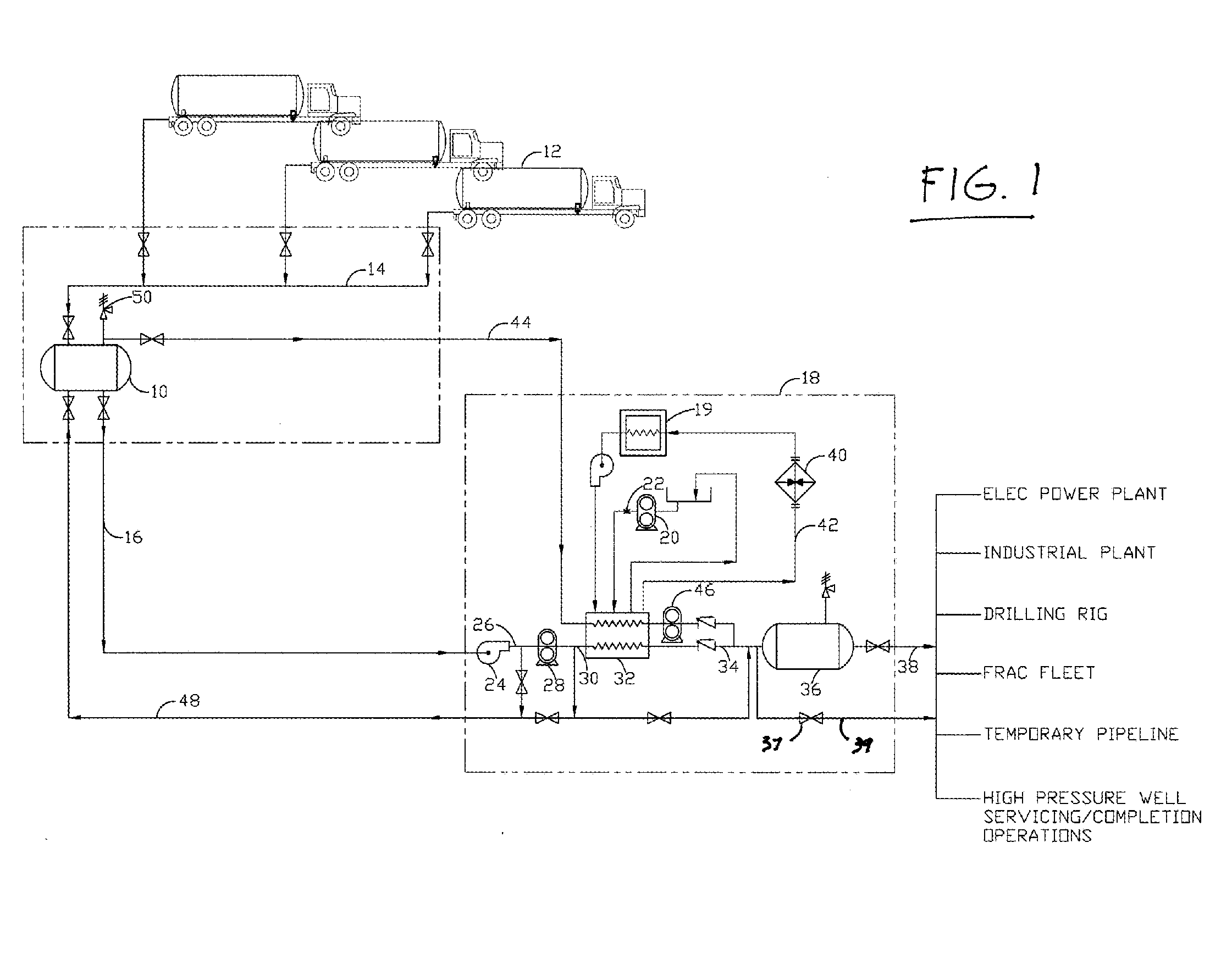LNG vaporization
a technology of liquid vaporization and lng, which is applied in the direction of fluid heaters, container discharge methods, lighting and heating apparatus, etc., can solve the problems of lng vaporizers currently in use, the widespread use of lng as fuel source, and the limitations of natural gas in such applications, so as to increase the heat produced by an internal combustion engine
- Summary
- Abstract
- Description
- Claims
- Application Information
AI Technical Summary
Benefits of technology
Problems solved by technology
Method used
Image
Examples
Embodiment Construction
)
[0016]Referring to FIG. 1, LNG is provided to a storage tank 10 by one or more LNG transport trucks 12 through a loading manifold 14, all constructed in accordance with known LNG storage and handling systems. LNG is output from storage tank 10 through supply line 16 to the LNG vaporizer of the present invention, indicated generally at reference numeral 18, that is itself powered by an internal combustion engine 19 that may be diesel or natural gas powered, or that may be powered on a mix of diesel and natural gas. The internal combustion engine 19 of LNG vaporizer 18 is “artificially” loaded by driving a hydraulic pump 20 that pumps hydraulic fluid through the restricted orifice 22 of a sequencing valve, the engine 19 producing more heat that is “captured” in the engine coolant as engine 19 works harder and burn more fuel to push hydraulic fluid through valve orifice 22. In the embodiment described herein, the internal combustion engine 19 of LNG vaporizer 18 provides three heat so...
PUM
 Login to View More
Login to View More Abstract
Description
Claims
Application Information
 Login to View More
Login to View More - R&D
- Intellectual Property
- Life Sciences
- Materials
- Tech Scout
- Unparalleled Data Quality
- Higher Quality Content
- 60% Fewer Hallucinations
Browse by: Latest US Patents, China's latest patents, Technical Efficacy Thesaurus, Application Domain, Technology Topic, Popular Technical Reports.
© 2025 PatSnap. All rights reserved.Legal|Privacy policy|Modern Slavery Act Transparency Statement|Sitemap|About US| Contact US: help@patsnap.com


